10 Giant Menorahs That Will Light Up for Hanukkah in NYC
From Brooklyn to the Bronx, we’ve rounded up the most exciting giant menorahs that will light up throughout the next eight evenings!


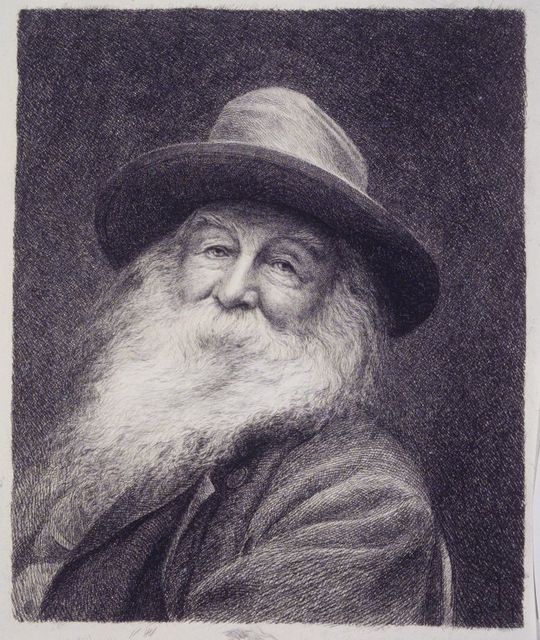
Image by Thomas Johnson from Brooklyn Museum in Wikimedia Commons
Walt Whitman is one of America’s literary giants. The poet lived and worked part of his life in what was then the independent city of Brooklyn and the now borough permeates much of his work. Although more than a century of transformations have significantly changed the Brooklyn that Whitman knew, if one looks close enough it is still possible to see remnants of Whitman’s time.
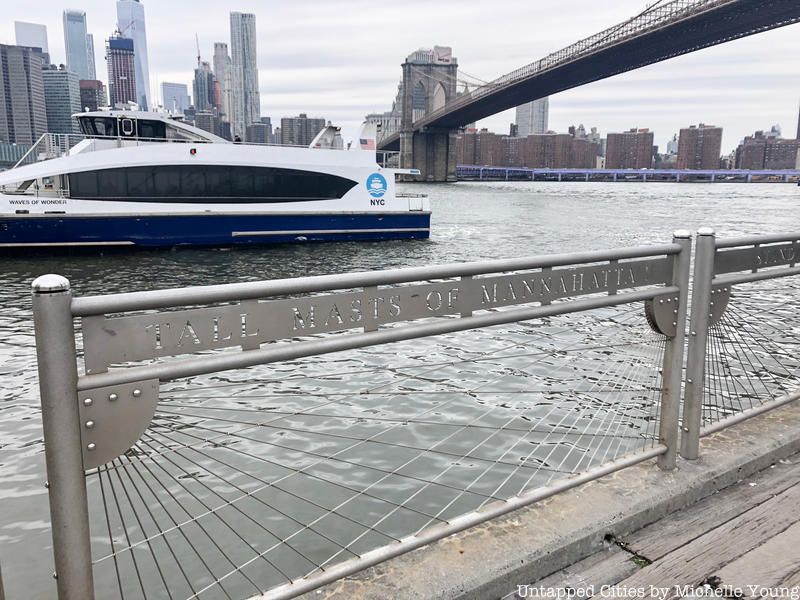
No person has ever described the commute of a typical Brooklynite as beautifully as Walt Whitman in his poem “Crossing Brooklyn Ferry.” In this poem, the poet describes the experience of crossing the East River from Brooklyn to Manhattan just before sunset. And although the original ferry landing is now part of Brooklyn Bridge Park, the park itself commemorates it’s native son with an inscription of the poem along its railings. Fulton Ferry Landing is now home to food vendors and Bargemusic a classical music hall housed on a floating barge at the foot of the Brooklyn Bridge.
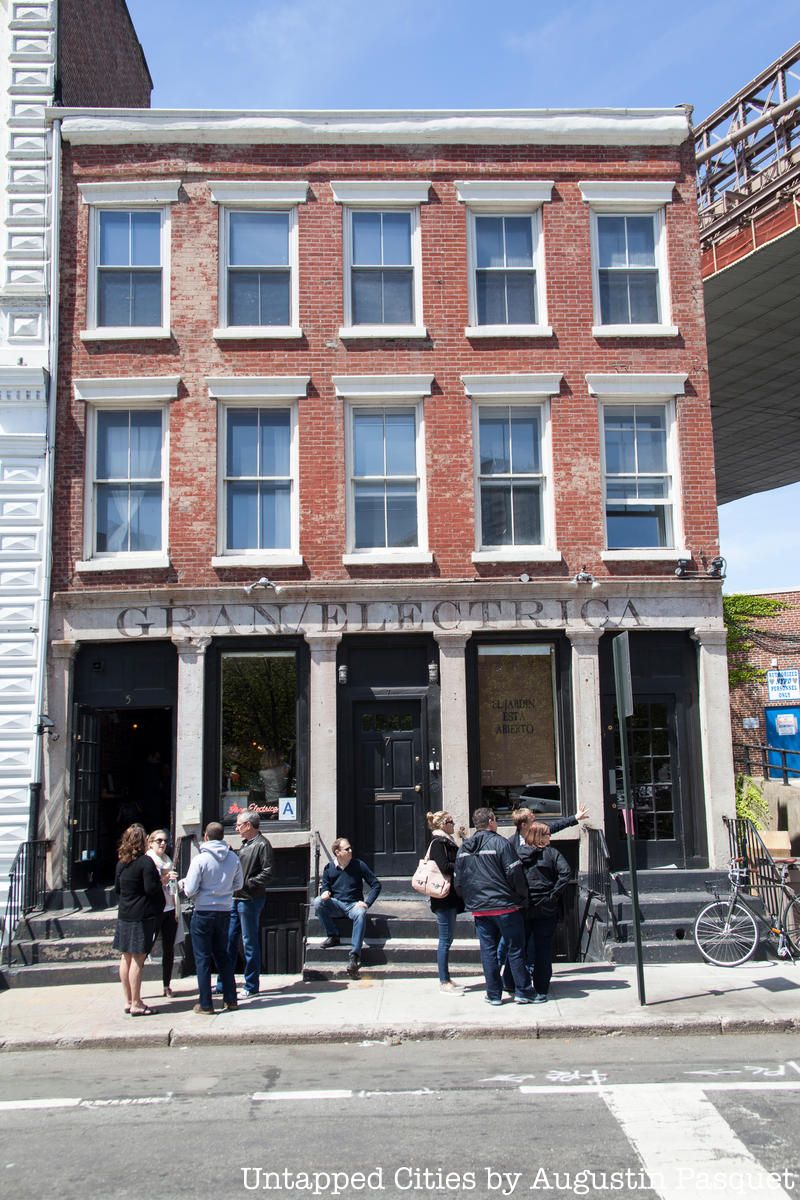
At 5-7 Front Street is the oldest office building in New York City
Beginning at the original Fulton Ferry landing, Old Fulton Street was a familiar haunt for Walt Whitman. Not only was this where the ferry left him upon his return from Manhattan, it was also home to the Brooklyn Daily Eagle, the newspaper Walt Whitman edited for two years, from 1846 to 1848. Originally known as Ferry Road, for a very long time Old Fulton Street provided THE iconic view of Brooklyn proceeding from the Ferry landing. The original Daily Eagle building no longer stands, in its place are the Eagle Warehouse condominiums which has a plaque on its facade dedicated to the poet.
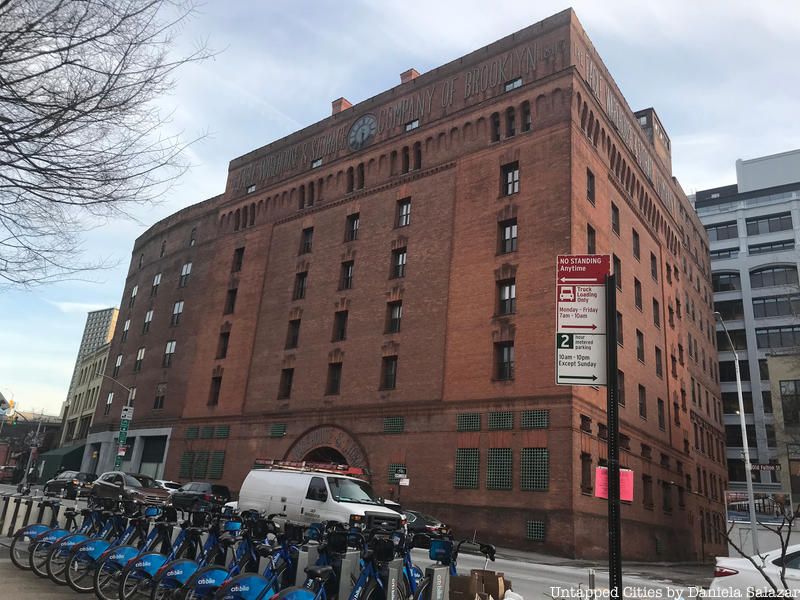
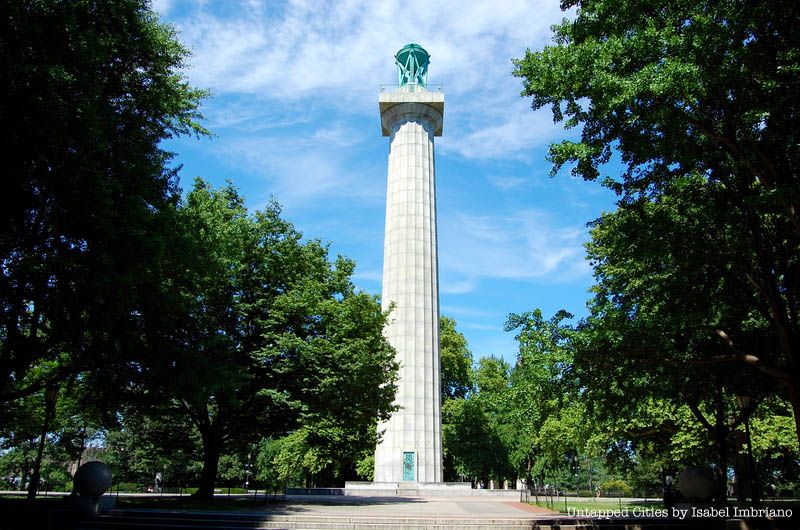
Brooklyn’s first public park, Fort Greene Park was first opened in 1848 with the name of Washington Park. Walt Whitman played no small role in this event as being editor of the Brooklyn Daily Eagle (the most read newspaper in Brooklyn at the time) he used his editor’s pen to make appeals for the construction of a public green space in Brooklyn. Redesigned in the 1860’s by Frederick Law Olmsted and Calvert Vaux (the same designers of Central Park and Prospect Park) this hilltop park is the cornerstone of the Brooklyn neighborhood that also bears its name. The park is also home to the Prison Ship Martyrs’ Monument, an 149 foot Doric column that commemorates the more than 11,000 American prisoners of war who died as captives aboard British ships during the American Revolution.
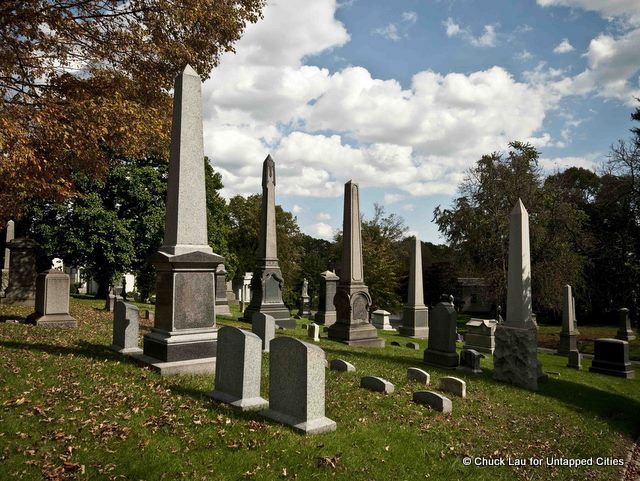 Green-Wood Cemetery
Green-Wood Cemetery
478 acres of green hills, centuries old trees, picturesque ponds in the heart of South Brooklyn. Green-Wood Cemetery is home to many famous “residents,” including Leonard Bernstein, Boss Tweed and Jean-Michel Basquiat. Designated a National Historic Landmark, the cemetery was founded in 1838 as one of the first rural cemeteries in the United States.
The beauty of its landscape and surroundings allowed it to quickly become a popular tourist destination. In the 19th century anyone who was anyone in New York society was buried at Green-Wood. In his journalistic writings, Walt Whitman wrote about Green-Wood several times and shows a profound familiarity and affinity for this once popular national destination. Check out Untapped Cities’ own behind the scenes look at Green-Wood here.
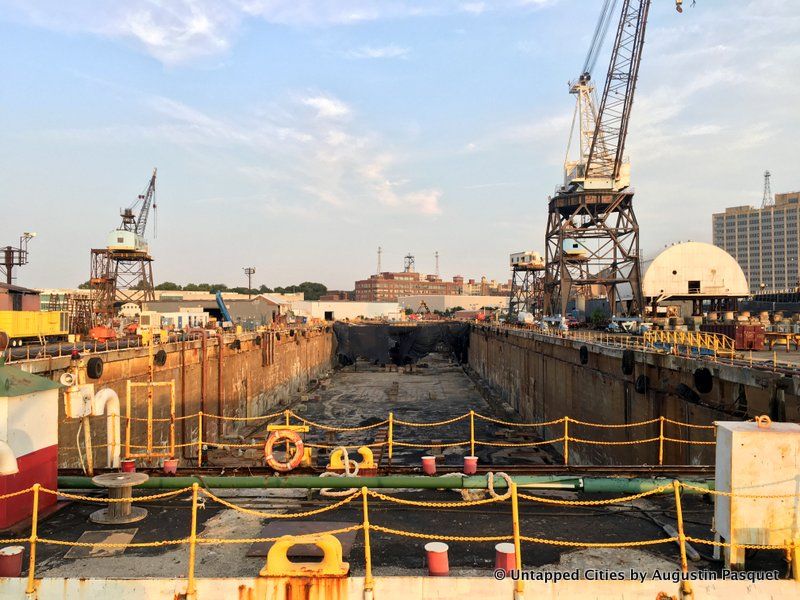
Established in 1801, and known then as the New York Naval Shipyard, the Brooklyn Navy Yard operated for nearly two centuries as the center of American naval shipbuilding. Walt Whitman would have been extremely familiar with the Navy Yard as he lived for a time in the abutting Wallabout neighborhood. The Navy Yard not only employed many of the residents of its surrounding neighborhoods, it also served as an area for social gatherings, or Sunday afternoon family strolls.
The Navy Yard’s buildings includes a variety architectural styles, dating from the 19th century onward. Closed in 1966, the current Navy Yard houses an industrial park and a center, BLDG 92, where one can learn about the history of the Yard and its surrounding neighborhoods for free. Also check out the crumbling mansions of Admiral’s Row that can still be seen on a walk by the Navy Yard.
A bonus spot is the last home of Whitman, recently the subject of a preservation battle. Check out photos here.
Check out 7 spots in NYC where you can drink where the Beat generation writers did and this fun map that highlights the authors of the Upper East Side.
Subscribe to our newsletter